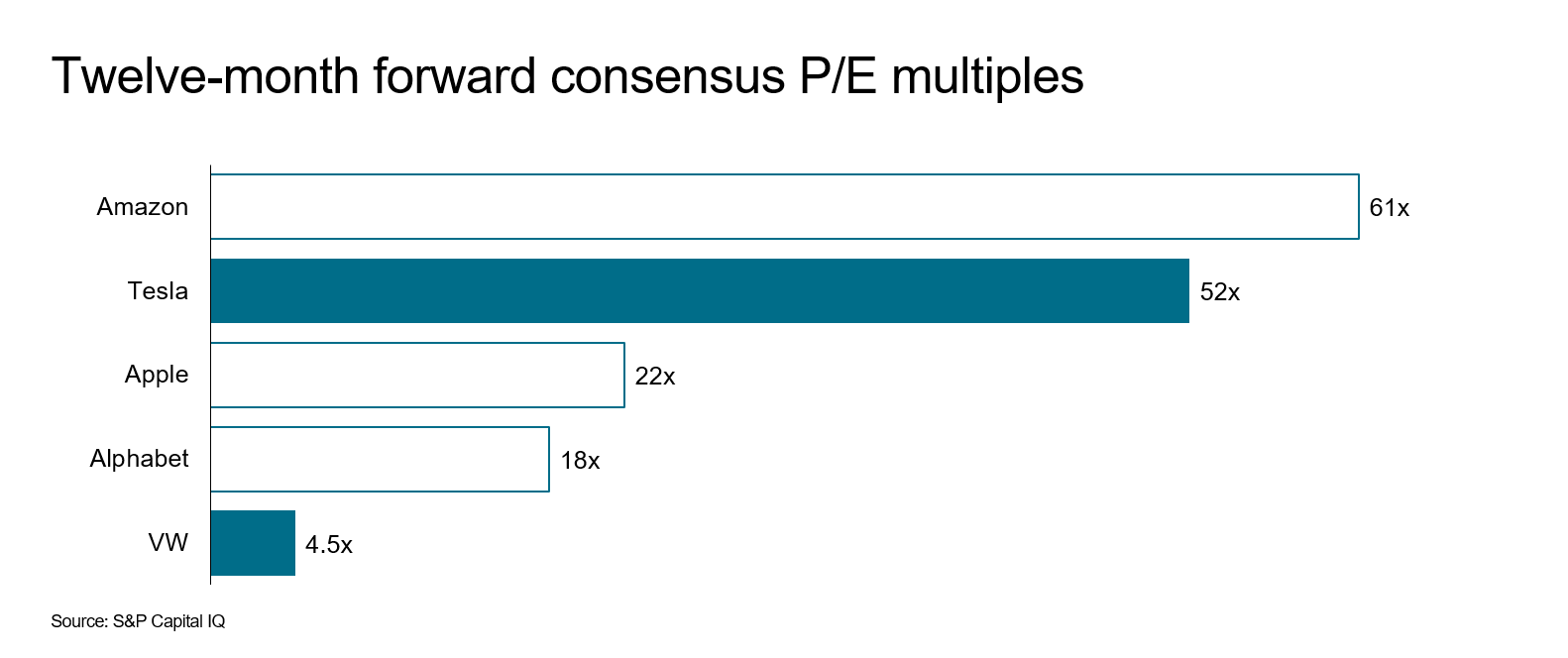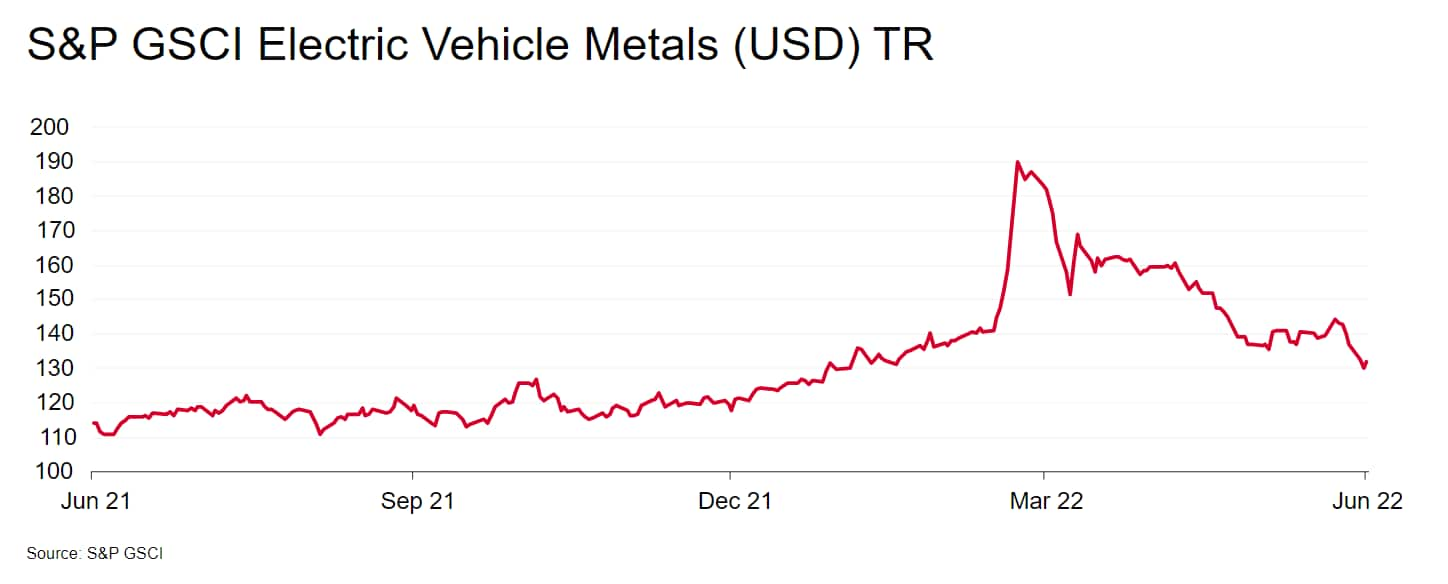[ad_1]
Automotive Every month E-newsletter &
Podcast:
What do capital marketplaces tell us about the automotive
business?
Despite the fact that money marketplaces grab headlines when dread
and volatility are greatest, the identical marketplaces do also purpose
rationally, and are a window into an ongoing re-analysis of
companies’ prospects and threats. So, what can we learn from the
point out of the marketplaces right now?
The autos sector consists of some of the most inexpensive and the most
expensive providers in the environment. This simultaneously displays both equally
the inherent troubles of legacy carmaking, and the markets’ hopes
for the long run beneficiaries of adjust. In latest months automotive
start ups have confronted a stark valuation actuality check, and the
virtual closure of the SPAC funding route displays far higher
scrutiny from traders. Additional money displacements are very likely
in the coming decades as a lumpy technological changeover plays out
all along the provide chain. None of this has basically transformed
the broad very long-phrase outlook for electrification. In the meantime close to
expression, there is lots of turbulence – notably from currency,
mainly to the detriment of US automakers.
Autos is the most polarised sector
The automaking sector is in the abnormal position of that contains
the two some of the most economical – and some of the most highly-priced outlined
businesses in the planet. On a person side legacy founded automakers –
like VW trades at all over 4.5 moments its anticipated 2022 earnings. At
the other stop tech-concentrated electrical vehicle makers notably Tesla
for which this figure is 52 moments, (vs. for comparison Alphabet
18x, Apple 22x, and Amazon 61x) – plus many as still-unprofitable
begin-ups for which no these kinds of calculation is still possible.

Legacy autos’ valuations replicate inherent
challenges
Automakers like VW have traded inexpensively relative to their
earnings for a lot of decades. There are several motives why: Sector
profitability is reduced as opposed to its money necessities. Stability
sheet possibility is superior because of to inventory specifications and the require to
fork out (and also successfully underwrite) the hazards of component
suppliers and seller networks. This in switch means individual bankruptcy risk
in financial downturns is major. The new cohort of start-ups
claims to deal with quite a few of these: Reduce mechanical complexity
indicates lesser money prerequisites, and easier offer chains. A lot less
maintenance implies number of or no conventional dealers and lessen
inventories. For this group, becoming electric powered-only is the
enabler.
Relative development expectations underpin the valuation
hole
On the other hand, the clearest justification for the valuation gap is the
expansion differential. This yr-to-day, world-wide battery electric
auto gross sales grew 68% vs. prior yr, though overall mild vehicles
contracted by 13%. Legacy automakers accessibility to that development is
restricted because even BEV changeover leaders like BMW and VW have
close to 6% BEV in their revenue blend. Eventually, legacy automakers are
preventing to defend a $2.5tn industry, although new automakers aspire to
seize it – with very little to shed.
Investor urge for food for ‘New autos’ has waned
considerably
New automakers’ valuations have been through stark adjustments in
the past 12 months. The chart beneath lists a assortment of electric
carmakers and their recent market place values relative to their
respective peak degrees. These moves are partly macro-driven:
Economic problems have develop into far more challenging globally, with
advancement slowing, inflation up, and hunger for risky belongings in
basic significantly down. Nonetheless, the essential shift is probably
growing recognition of the troubles inherent in starting and
scaling automotive manufacturing from scratch.
Chosen funding route now closed
At the exact time, the level of popularity of fundraising by means of the SPAC
(particular purpose acquisition company) route has ground to a virtual
halt, with 69 this kind of transactions in 2022 to day versus 613 all through
2021. EV businesses that went public by means of the speculative ‘blank
cheque’ technique in 2021 incorporated Fisker, Polestar, Lucid, and
Arrival. Providers now wishing to stick to in their footsteps are
likely to significantly bigger monetary scrutiny.


A bumpy transition
Early sector euphoria has not presented way to the actuality of the
undertaking in entrance of us. Unquestionably the advancement of BEVs and the
commensurate decline in ICEs (Inside Combustion Motor) will be
the industry’s most important changeover considering that its inception early
very last century – this will definitely not be easy. A transformation
which considerably impacts all aspects of the mobility ecosystem –
innovation, car progress, procedure sourcing, manufacturing
dynamics, retail engagement and the aftermarket – will be “bumpy”.
This will be uncharted territory at practically each individual degree.
Changeover velocity, motivation by stakeholders (individuals,
federal government, dealers etcetera.), securing upstream battery raw products,
altered logistic streams, client acceptance/education and an
all-new service dynamic all cloud the sky. The present-day ICE-focused
ecosystem took us above a century to hone – expecting a
transformation with minor drama by means of the upcoming decade is not
reasonable.
Funds displacement is probably across the
ecosystem
The prospect for cash displacement is superior at all ranges of
the ecosystem. Case in point are the component suppliers. Essential
to long term innovation, re-expense and most of the present-day vehicle
benefit increase, various suppliers in system parts which disappear in the
BEV world are faced with essential choices. The solutions are to stand
pat and experience the quantity decline, pivot, and target efforts on
units crucial to the BEV place, double-down and be a consolidator in
a declining industry, or merely promote the procedure. Timeframes will
vary however the displacement is undeniable. There will most
absolutely be winners and losers during the transition.
Electrification has not been derailed
Even with the ensuing ecosystems shifts, does this indicate
electrification now will not happen, or will happen slower? There is
limited proof of huge adjustments to the essential outlook. For
just one, the publish-Ukraine surge in battery raw product costs has
abated relatively, even though however-elevated gasoline selling prices deliver
assistance to BEV possession costs on a relative basis. On top of that,
regulatory momentum carries on to work in favour of electrification,
with the EU parliament notably voting in early June to ban new
inner combustion gross sales from 2035, albeit continue to topic to
settlement from notable opponents this sort of as Germany.

The shifting sands of currency
Ultimately, a notice on currency actions. International automakers’
fortunes are to some extent a operate of central banks’
most likely divergent approaches to tackling inflation in the
coming several years. Specially, a strong US greenback is creating
headaches for US domestic carmakers, and a increase to those people
somewhere else. The dollar’s 19 calendar year superior vs. other currencies (USDX
index) hurts GM and Ford because their income from abroad
functions is brought dwelling at a significantly less favourable trade amount.
Conversely, a solid greenback is good information for automakers outside the
United States, whose overseas gains are boosted by currency
results. No matter whether investing exterior the United States tends to make feeling
relies upon on one’s perspective: A US trader in Nissan would have
observed its shares slide only 10% but would have shed yet another 15% from
the weakening yen.


————————————————————————————————-
Dive Deeper:
Auto demand insights at your fingertips. Understand
a lot more.
S&P Global Mobility updates
light automobile manufacturing forecast for June. Read through the
post.
Request the
Expert: Demian Bouquets, Automotive Fiscal Analyst
Ask the Specialist: Michael Robinet,
Govt Director, Automotive Consulting Providers


This article was released by S&P International Mobility and not by S&P World Scores, which is a separately managed division of S&P Worldwide.
[ad_2]
Resource backlink
